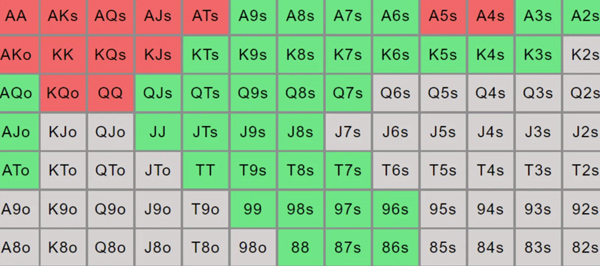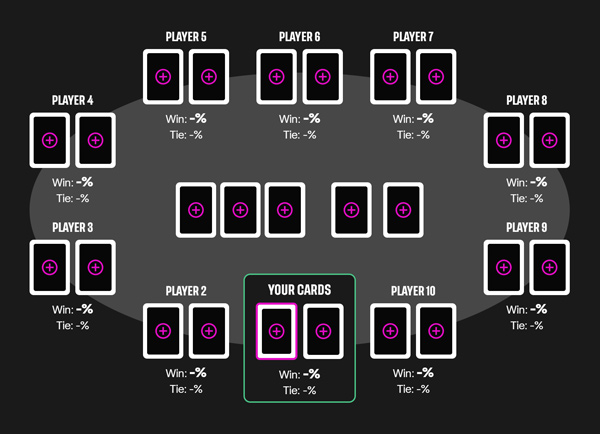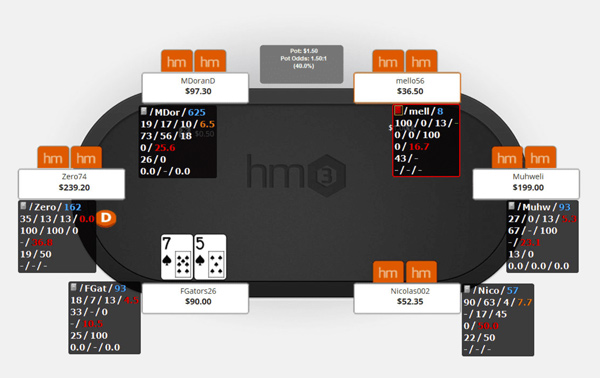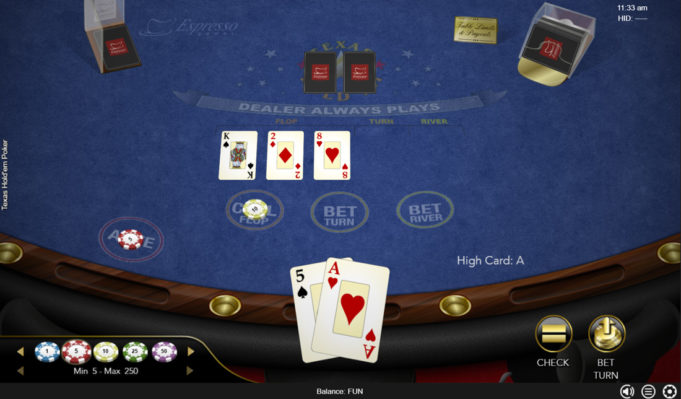Of all poker variations known today, Texas Hold’em is players’ all-time favorite and the most widespread online offering. If you’re looking for solid advice on how to excel in the game, you’ve come to the right place, for we’ve gathered advanced Texas Hold’em tactics, all tried and true.
Understanding Player Types and Adapting Your Strategy
Knowing who you play with is No. 1 among online poker advanced tactics. Even though you’re not in the same physical space as your opponents, you can still understand their types by how they generally behave, how much they stake, and what actions they perform recurrently.
Pay careful attention to how often your adversaries check, call, or raise and how they react to your bets to see if they’re cautious or bold and what level of risk they are ready to take. After you’ve learned other players’ habits well, you can figure out what you are up against and, consequently, map out your own strategy in the game.
If you’re wondering where to try out advanced poker tactics, check 1xBet page dedicated to online games. It features Texas Hold’em and numerous other poker varieties from leading development studios. All games look and feel top-class, providing a superb player experience.

Mastering Positional Play
Your position—or actual seat at the virtual table—is crucial in online Texas Hold’em. Playing in position gives you a significant edge over other players and helps you make well-informed decisions. If you don’t know much about different positions and why they matter in poker, you should definitely fill the gap.
Depending on your proximity to the dealer and your betting order, you may find yourself in an early, middle, or late position. Playing in early positions, which implies placing the blinds and acting first in the round, is not the best of the lot. Yet, if you happen to take such a seat, the optimal strategy is to stick to a tight play.
You can afford a looser play while sitting in the middle, but you can literally break loose once in a late position. When acting last—or being in position, you already know how others have behaved in the round and, therefore, can leverage this knowledge to plan your own move.
Advanced Bluffing Techniques
Bluffing is poker’s trademark and a craft worth learning if you want to succeed in the game. Some players, especially the ones lacking experience, might misinterpret bluffing, regarding it as mere deception. However, there is much more behind this technique, including good reasoning, timing, and psychology, of course.
Advanced poker techniques require advanced bluffing. Raising with a poor hand might work out once or twice, but it will not be effective in the long run. It’s much safer and wiser to bluff with a draw, which may eventually lead to a stronger hand or your opponents’ folding. This type of smart tactic is called semi-bluffing.
Continuation betting is another advanced bluffing technique used in Texas Hold’em. It’s about forcing your opponents to fold by wagering after a raise preflop. You can place a continuation bet on the flop or go on bluffing with a double or triple barrel, that is, betting across two or three streets or rounds, respectively.
Hand Range Analysis and Board Texture Reading
While guessing the exact ranks and suits sounds like an impossible task, determining the ranges of your opponents’ hands is what you can and should aim for. Other players’ positions, actions, stakes, and even personalities are some of the necessary factors to consider when calculating the card combinations they possibly have.
Identifying hand ranges is a must-have skill for every advanced poker player, and it’s easier to develop with the proper tools at your fingertips. With the abundance of specialized software, both free and paid, you can visualize and scrutinize hand combinations in the format that suits you most, such as a chart or percentage.

Hand ranges and board textures are closely related concepts, and reading them both is key to becoming a high-flying player. Recognizing board textures is instrumental in elaborating your action plan after the flop. Once you’ve read the board correctly, you can make educated decisions about your bet size and whether or not to bluff.
Pot Odds, Implied Odds, and Expected Value (EV)
If you want to take your play to the next level, you should explore the game’s ins and outs and expand your vocabulary. Some terms and concepts in poker may be confusing, and odds are just such a case. There are pot odds and implied odds, denoting different shades of probability, and there’s also EV, a related term.
Pot odds representing the pot-to-bet ratio can give you a clue as to whether to call or fold. Also, they’re used to estimate your call’s return, known as EV or expected value, which can be either positive or negative. Similar to pot odds, implied odds reflect the relationship between the pot and the bet, albeit factoring in future betting rounds.
Taking a seat at a virtual Texas Hold’em table is a bad idea unless you know the actual math behind your potential gains. There are specific formulas to calculate pot odds, implied odds, and expected value, which poker pros should be able to use. But there are also online calculators, which appear to be helpful tools.

Multi-Table Strategies for Online Play
Our list of Texas Hold’em online tips wouldn’t be complete without multi-tabling. Indeed, the virtual version of the game offers you an attractive opportunity to sit at multiple tables at a time and, therefore, win more within the same period than when playing at a single table. However, this will only work out with proper strategies applied.
If you’re about to take your first steps in multi-tabling, begin with fewer tables and increase them once the previous number has been mastered. Creating a comfortable playing environment is very important, so organize the tables as you see fit, either by stacking or tiling them, and make sure nothing distracts you from the gameplay.
Multi-tabling means multi-tasking, and it’s good to prioritize the tables and tasks, starting with the most challenging ones. Overall, playing nice and easy is a well-suited strategy for this mode of the online game, so it’s no wonder multi-tablers frequently turn to ABC poker and rely almost exclusively on their strong hands.
Utilizing Online Tools and HUDs (Heads-Up Displays)
Whether while sitting at one or several tables simultaneously, your play can be significantly improved through designated poker tools, such as trackers and HUDs or heads-up displays. Both newbies and pros can find a sizable value in tracking all of their own and opponents’ moves and having them visualized in the course of the game.

Depending on the particular product, its set of features, and its cost, poker tracking software provides insight into a broad spectrum of data. It allows you to keep a detailed record of your win and loss rates, the history of your hands, the time of your sessions, as well as everything related to other players’ behavior.
The information collected about your opponents can be clearly displayed by HUDs. These handy poker apps visualize preflop and postflop statistics in real-time to facilitate your decision-making. VPIP (Voluntarily Put Money in Pot), PFR (Preflop Raise), and WTSD (Went to Showdown) are the HUD stats, to name just a few.
Conclusion
To level up in online Texas Hold’em, you should delve deeply into the game’s intricacies, such as the different types of players, positions, and odds. Learning to bluff smartly, analyze hand ranges, and play simultaneously at multiple tables is also essential to becoming proficient.
An array of dedicated poker software, including odds calculators, trackers, and heads-up displays, can greatly enhance your online play. Remember: the wider your arsenal of strategies and tools, the better your chances of outperforming opponents at the virtual table.












